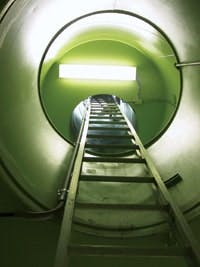Paul Twaddell is the industry segment manager for pumps and compressors at Eaton Corp. Twaddell can be reached at [email protected]. Adam Krug is a product manager at Eaton Corp. Krug can be reached at [email protected].
undefinedContinuous water and wastewater systems make uptime and throughput crucial. Preventing equipment failure, scheduling downtime and reducing energy consumption continually are top priorities. There are easy ways to protect systems, increase uptime and minimize maintenance costs.
With motor protection relays equipped with fieldbus protocols, maintenance and operations teams are monitoring key failure indicators on motors and pumps in real time. Because system performance problems are being addressed, energy waste is being avoided—simultaneously netting cost savings and improving system reliability.
Most water and wastewater motors employ motor protection. Standard overload protection has evolved beyond strictly monitoring current: Today’s electronic overload relays monitor power, power factor, current and voltage. Further, they provide continuous data on a range of parameters and communicate via standard industry protocols that tie into SCADA, programmable logic controller and distributed control systems.
With real-time, continuous information, maintenance teams can realize potential issues before they cause downtime or waste energy. Instead of performing spot checks, personnel can detect variations from a centralized location, stay proactive and avoid downtime.
Improved Pump Maintenance
When motor performance can be monitored and analyzed remotely, maintenance practices can be optimized. Downtime can be scheduled, spot checks minimized and service time reduced.
Personnel can gain a better and earlier under- standing of the fault type occurring by using advanced motor protection relays. Additional insight on the fault type means that a person with the right skill set is dispatched to address a specific issue.
Motor and pump operation can be checked from any computer in the facility or at home. Trended data collection can detect or predict potential motor or pump failure conditions. When conditions are indicative of a failure, proactive measures can be taken to avoid catastrophic failures. This also stabilizes opportunity costs.
Energy Savings
Motor protection relays equipped with kilowatt monitoring and standard fieldbus can help avoid peak demand charges, identify increased consumption in a given load, recognize discrepancies between similar loads and spot power-factor line items. Atypical and inefficient operation is recognized in real time.
The linear relation of power to motor load ensures visibility of these changes, which is not always detected by looking at current consumption due to the nonlinear nature of current to motor load. In wastewater pump applications, motors typically are loaded and running at about 40% load. In this area of operation, current is relatively flat, so an increase in load caused by the introduction of an inefficiency may go undetected otherwise. Looking at kilo-watts allows one to see this increase in consumption easily and to deploy maintenance to rectify it.
Extended Equipment Life
Extending the life of valuable system assets is crucial. To prevent the failure of a motor or pump, motor protection relays can act on their data with flexible protection settings. For example, low- power protection is engineered to protect the load or pump from a starved or deadheaded condition—a common cause of pump seal failure. When this happens, the motor protection relay acts as a pump-off relay and shuts down the pump to extend its seal life.
Without a motor protection relay equipped with low-power protection, the pump or motor would continue to run and a second pump likely would be brought online to compensate. So, two pumps would be performing the work of one pump; the seal of the first pump would be heat-aging, and eventually it would fail.
Case in Point
The Sheyboygan Regional Wastewater Treatment Facility serves 68,000 people in Sheboygan, Wis. Average daily flow is about 11 million gal, and if there is a rain event or substantial snowmelt, peak flow can reach 64 million gal. It is essential that all pumps operate effectively to ensure that increased flow levels can be managed properly and adverse sewer problems avoided.
At its Indiana lift station, Sheboygan had three 75-hp motors using three traditional bimetallic overload relays for protection, and flowmeters on the output of the pump. Flow data was communicated to headquarters and logged in a SCADA system. The city, however, had no means of monitoring anything else related to motors or pumps.
After replacing the bimetallic overload relays with the Eaton C441 Motor Insight—motor protection relays equipped with power monitoring and power-based protection—the maintenance supervisor noticed one of the three motors drawing more power. Still, all three flowmeters for each pump reported the same flow reading.
Left undetected, this minor increase would add up to more than $10,000 in annual energy costs and extra mechanical and electrical stress on the system. Instead, C441 Motor Insight provided the data and a service technician removed a for- eign object wrapped around the impeller, which decreased the power draw back to a normal level.
With the help of the onboard power monitoring and industrial communications, Sheboygan can more easily identify and resolve situations before they lead to energy inefficiencies or downtime. With the ability to monitor motors and pumps in hard-to-access areas, the city now can trend real-time motor and pump conditions that could have gone unnoticed for weeks with traditional bimetal protection and flowmeters. A full suite of protection is provided, including a low-power feature protecting pumps against starved or deadheaded conditions.
Water and wastewater systems need to keep motors and pumps up and running while reducing maintenance and energy expenditures. Increasingly, intelligent electronic overload relays can provide real-time performance data and diagnostics to improve operations and avoid unnecessary energy consumption
Download: Here

